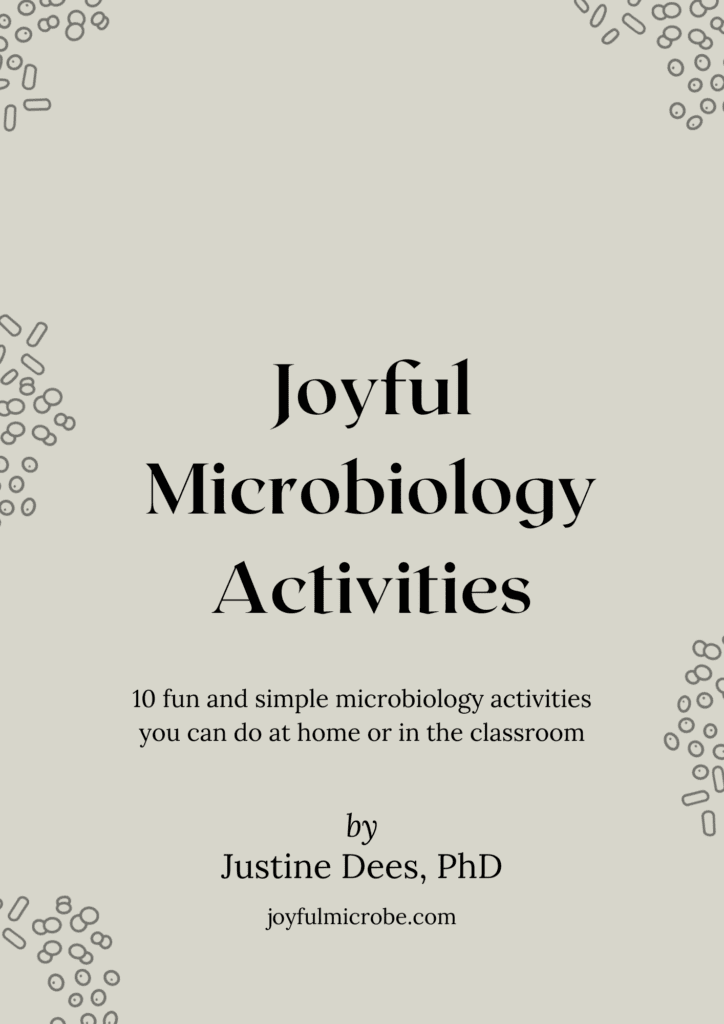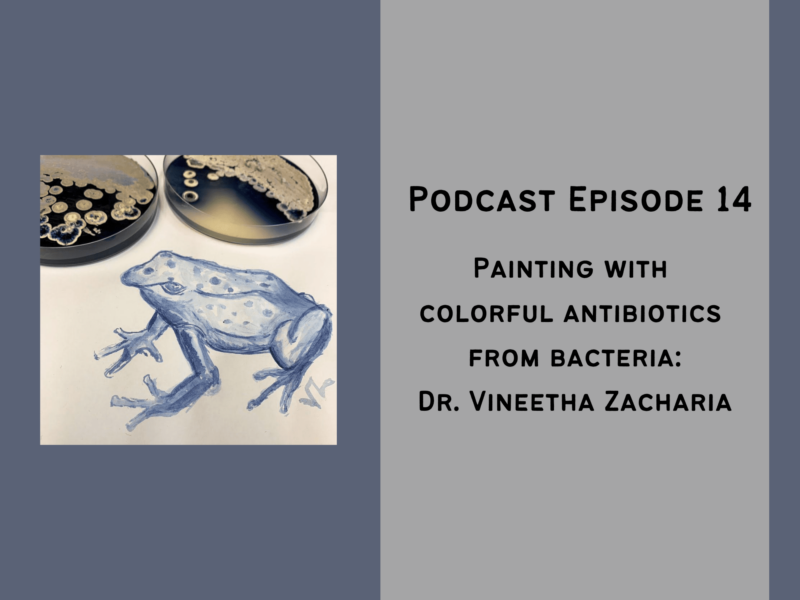The K-12 curriculum does not cover much microbiology. But this area of science matters. Children need a complete understanding of the microorganisms that play roles in our health, like the microbiome, and diseases, like germs. That way, they’ll carry these concepts into adulthood, ultimately helping keep them healthier.
Despite the lack of microbiology education in K-12, some high schools offer full microbiology courses. So, to learn more about what it’s like teaching microbiology at the K-12 level, I talked to high school microbiology teacher Jessica Popescu.
Whether you’re an educator, microbiologist, or science enthusiast, you’ll find something interesting in this episode of the Joyful Microbe podcast.
Topics covered in this episode:
- how to introduce students to microbiology and the different types of microbes
- techniques for engaging students
- how project-based classes help students experience science
- how microbiologists can help high school educators
- hands-on microbiology activities for high school students
- microbiology classroom activity
Listen to my episode with Jessica Popescu
.redcircle-link:link {
color: #ea404d;
text-decoration: none;
}
.redcircle-link:hover {
color: #ea404d;
}
.redcircle-link:active {
color: #ea404d;
}
.redcircle-link:visited {
color: #ea404d;
}
Powered by RedCircle
Or listen on Apple Podcasts, Google Podcasts, or Spotify
Teaching high school microbiology
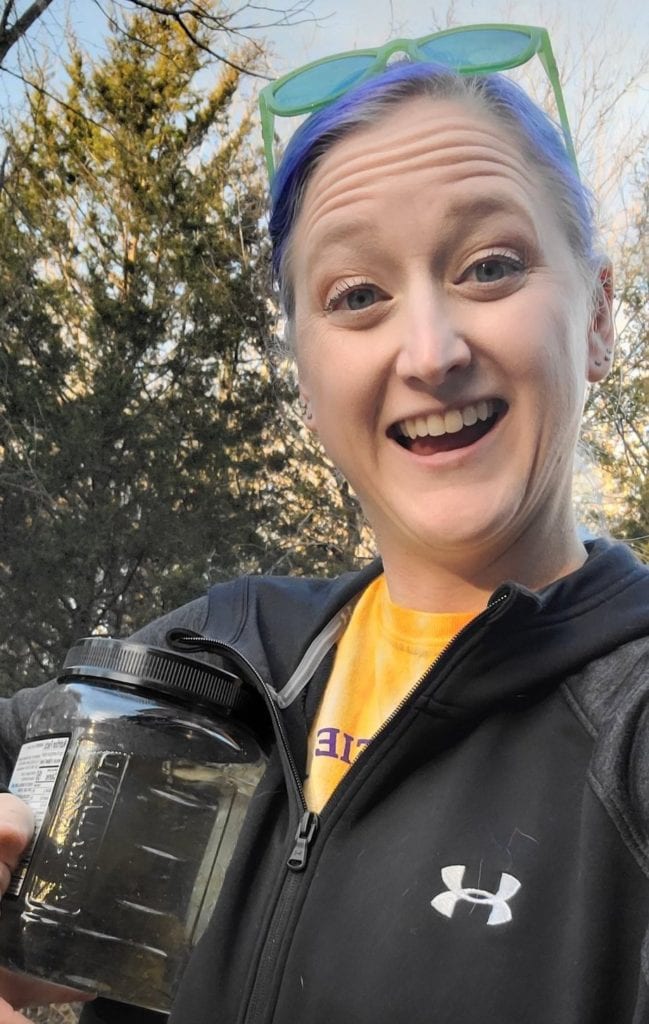
Jessica Popescu teaches life science classes at Blue Springs High School in Missouri, including microbiology, human body systems, and environmental science.
In her microbiology class, she seeks to provide opportunities for her students to experience science firsthand. Other science classes at her school are test-centered, so she gives no quizzes or tests. The entire class is project-based.
Microbiology education in K-12
Unfortunately, on the whole, the K-12 curriculum lacks much microbiology education. “It really isn’t covered at all, essentially. The most you go into it within a high school biology class is probably talking about the nutrient cycles. And when you’re talking about the immune system, germs come up pretty often. But it’s very common for students to not know the difference between bacteria and viruses and think they’re the same thing.”
However, Jessica is helping her students finish high school with a solid understanding of and appreciation for microbiology.
Introducing students to microbiology through experience and books
One way she cultivates an appreciation for microbiology is through stories in books. She reads The Hot Zone by Richard Preston to her students. It graphically depicts a man getting sick, and she says, “ it’s really gory, and high school kids love it.”
She has her students come into a completely dark classroom with a light behind her and reads it like a campfire ghost story. She even has creepy music, a giant biohazard sign, and a slideshow in the background with pictures to enhance the environment.
They also read a couple of sections of The Ghost Map by Steven Johnson, a book about the cholera outbreak in London. “Once again, it’s really gross and talks about overflowing cesspools and rice-water stools, so they get really interested.”
Learning the different types of microbes
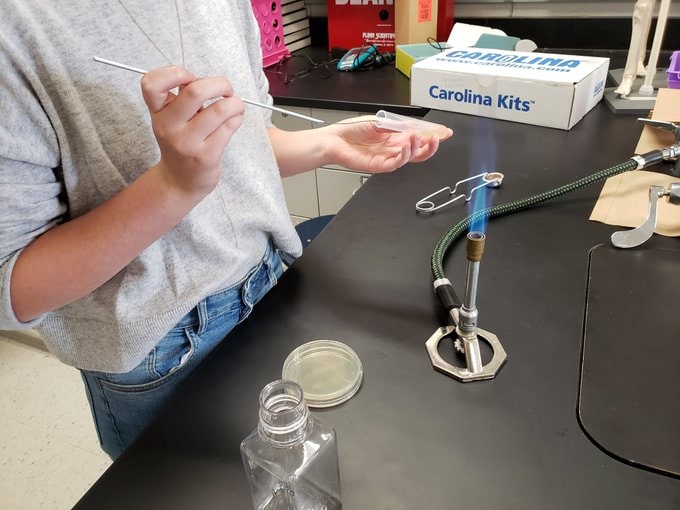
To learn the different types of microbes, Jessica first presents them with a phylogenetic tree to show them where bacteria fall compared to everything else. And she says, “that’s really interesting for them because it puts it in perspective.”
They talk about bacteria and learn lab techniques, including looking at microbes under their microscope and growing them on petri dishes. Her class also covers viruses and other microbes.
Microbiology misconceptions and misunderstandings
A concept commonly misunderstood by Jessica’s students is the difference in size between the types of microbes. It’s hard for them to wrap their heads around how much bigger bacteria generally are compared to viruses. So, she shows them a scale of the universe simulation, a website that allows you to zoom in and out to smaller and larger objects. It helps them understand how small viruses are and where they fall on the scale compared to bacteria and us. And then, to solidify that concept, she tells them that there are even viruses that infect bacteria.
“And for a lot of them, seeing is believing. So it’s really hard to convince them why these things matter when they are that small.” So, showing them these microbes and connecting them to concepts that directly affect us helps these ideas sink in.
How microbiologists can help high school educators
Even with a solid educational background in microbiology, Jessica says that she feels overwhelmed at times with how to approach it in the classroom. So, she explains that a resource detailing interesting microbial species to look at in her microbiology class and the materials required to work with them would help her and other high school educators.
Another way for microbiologists to help is by talking to high school science classes. Providing students with access to a real-life scientist lets them interact with one when they wouldn’t usually have that opportunity, making a difference in their lives.
Teachers can connect with scientists through an organization called Skype a Scientist, founded by Sarah McAnulty. You can sign up for free to have a scientist talk to your class about almost any subject imaginable.
Jessica has enjoyed doing Skype a Scientist with her class. She says you talk with the scientist through email to set everything up. You can ask them to speak on a particular topic or for a specific amount of time and then do a Q&A at the end. Sometimes they request your students come up with questions beforehand, or they’ll provide some background information for you to tell your students. That way, you have a chance to discuss the format ahead, allowing you to prepare your students if you need to.
Hands-on microbiology activities for high school students
Since the high school microbiology class Jessica teaches is project-based, she shares some of the different hands-on activities she’s used.
Winogradsky columns

Winogradsky columns, which I’ve covered previously on Joyful Microbe, are microbial ecosystems you create with mud, eggs, paper, and water. You can add other things that encourage different microbes to grow in that environment. And because you do all of this in a clear container, you see the microbes create different colors and layers.
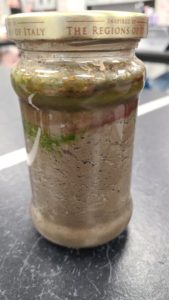
These Winogradsky columns are fun and straightforward to create, and you learn a lot from them. The students can document the development of the columns over weeks and practice observational skills and inquiry. It interrupts the regular motions of school by letting them become kids again since part of creating the columns requires them to play in the mud.
Watching the columns interests the students because the microbes produce beautiful colors, like purple, green, and maroon. Some of Jessica’s students’ columns even grew surprises like a sprouted mushroom and paramecia swimming in the top water layer visible with the naked eye.
Want to teach your students how to make Winogradsky columns? Get the Joyful Winogradsky Column Guide, a teacher’s guide to the Winogradsky columns activity. Click here to find out more.
Finding tardigrades from lichen
Finding tardigrades or water bears with a microscope is another activity Jessica does with her class. She uses a dissecting scope to search for tardigrades from samples like lichens from her back fence.
Finding microbes in pond water
Pond water and creek water are excellent places to look for fascinating microbes. Doing this allows Jessica to continue establishing the concepts of the size of microbes and how to use microscopes. The students love this activity, watching the tiny microorganisms zoom around, and she says, “all of a sudden, microbes become really interesting.”
Classroom or homeschooling activity
A big part of science is inquiry, but students are often encouraged to stay quiet. So, one way Jessica helps students become comfortable with asking questions is through the following activity. Each student presents a topic related to microbiology, but they do this in a unique way. Read on to learn how you can incorporate this activity into your class.
Day 1
- Share the definition of microbiology
- Have the students brainstorm at least 20 questions for 5 minutes (this many questions will seem a little overwhelming to them)
- On a whiteboard at the front of the class, ask the students to share their questions. Tell them that the more questions they provide, the easier this activity will be for everyone. You can even give a bonus to whoever provides the most questions
- As you write them, categorize the questions (viruses, bacteria, protists, microbiology careers, microbiology and environmental science, etc.)
Day 2
- Tell the students they will be choosing one of these questions to research, do a presentation on, and present it to their classmates (the kids will likely freak out)
- To ease them into it, explain that they’ll only be presenting to one person at a time rather than the entire class. You’ll do this by having half of the class sit, ready to present, while the other half watches the presentations. And then, they will rotate clockwise until they see each presentation
- Allow the students to choose questions to present, starting with the person who volunteered the most questions
Day 3
Have them research their question and explain how it relates to whatever category it’s in and why anyone should care about this topic.
Day 4
Have the students give their presentations, presenting one-on-one. When they’re close to the end, stop them before they rotate again and tell them to close their devices and present without looking at their computer. Although they may protest, they will feel so proud of how much they know off the top of their heads once they do this. Make sure to encourage them about how well they did and how much they learned in a short amount of time!
“It’s a fun way to get really proud of your students quickly and see what they’re capable of. It’s really awesome,” says Jessica.
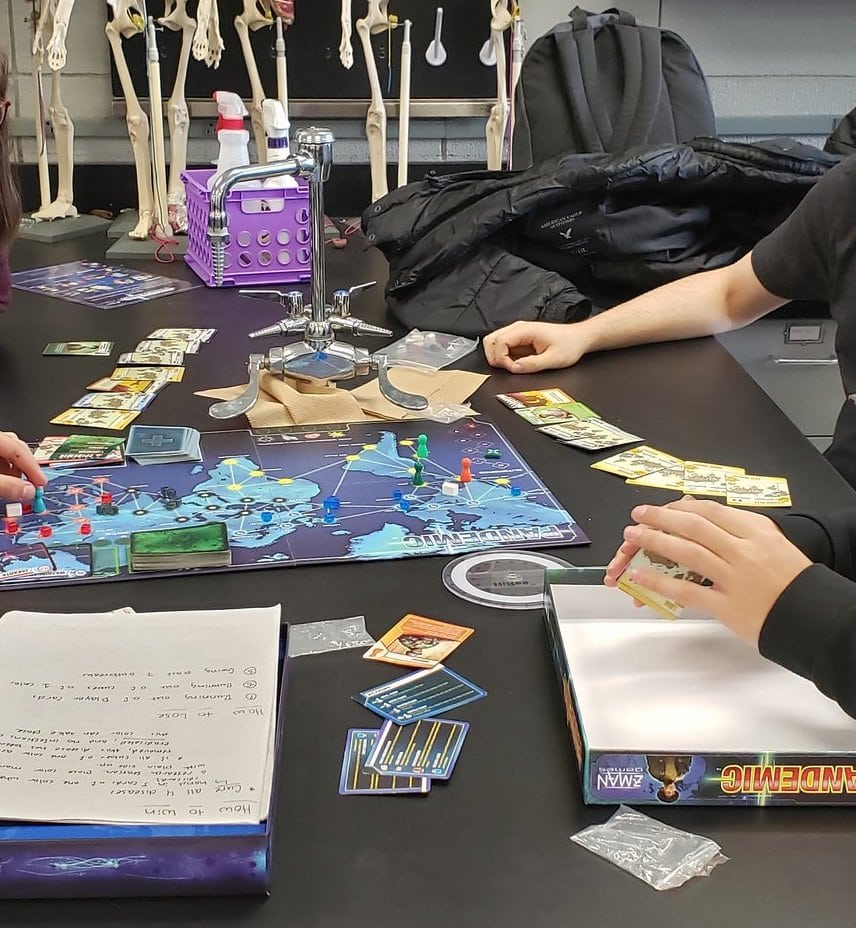
Links & Resources
This post contains affiliate links — see my disclosure policy.
- Board Game: Pandemic
- Skype a Scientist
- Books mentioned:
- The Hot Zone by Richard Preston
- The Ghost Map by Steven Johnson
- More microbiology books here and here
- Books about infectious diseases
- Children’s books here and here
- Other related Joyful Microbe articles:
- Joyful Winogradsky Column Guide – teacher’s guide
- A window into the microbial world: the Winogradsky column
- What are the types of microbes and where can we find them?
- How To View Microbes With A Home Microscope
- 5 Ways to Share the Microbial World With Your Children
- Using viruses to battle superbugs (phage therapy): Dr. Jessica Sacher
- Introduction to Lichens: Dr. Klara Scharnagl
- How to find a tardigrade at home under the microscope
- The Best Compound Microscopes for High School Students
- CDC Science Ambassador Fellowship program
Connect with Jessica Popescu
Jessica Popescu is a high school science teacher at Blue Springs High School in Missouri, where she also teaches Human Body Systems and Environmental Science and is an assistant coach for both track and cross country. She has two young daughters with her handsome spouse named Luca, loves native plants, and enjoys collaborating with professionals that mirror the information she teaches in the classroom.
Connect with Jessica Popescu: Twitter
Spark curiosity about the microscopic world!
My ebook, “Joyful Microbiology Activities,” offers 10 engaging, hands-on lessons to bring microbes to life in your classroom. Get yours today!
The post Microbiology Activities for High School Students: Jessica Popescu appeared first on Joyful Microbe.


